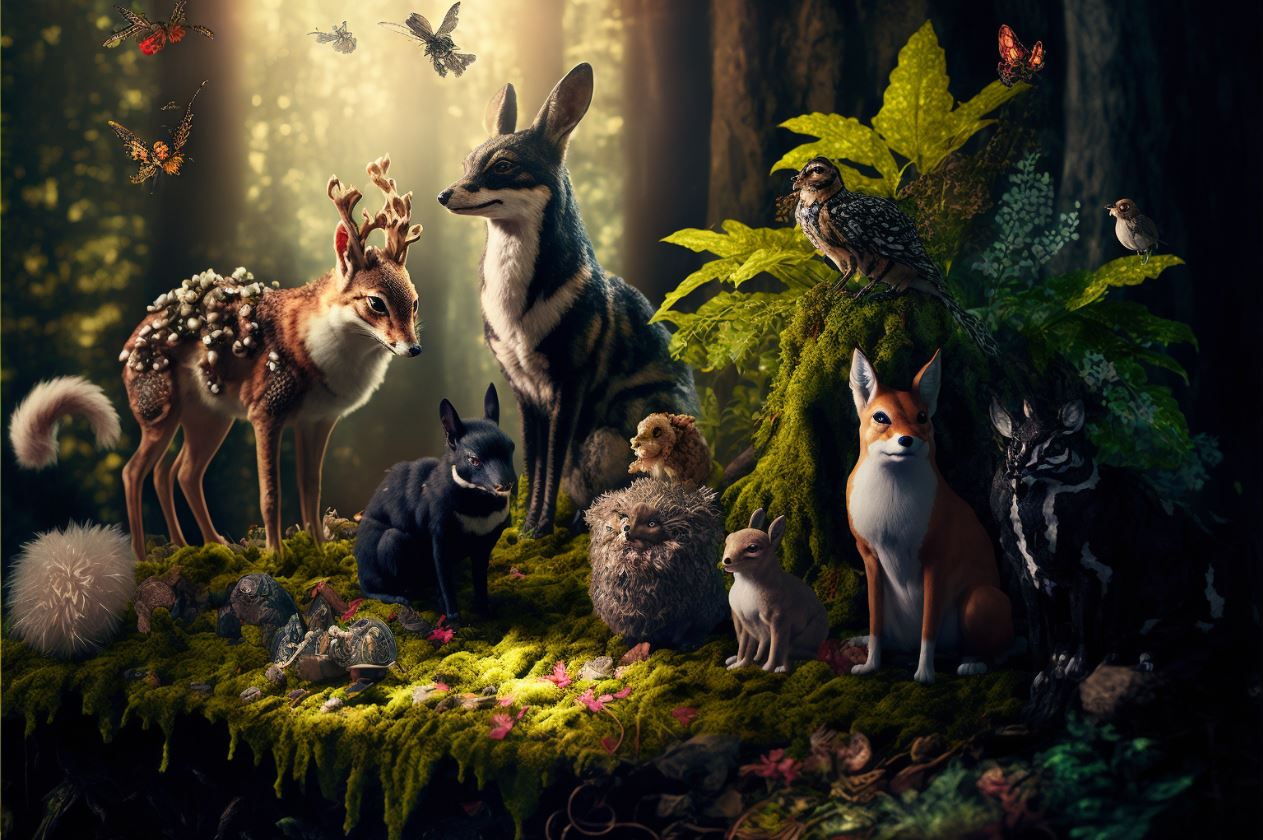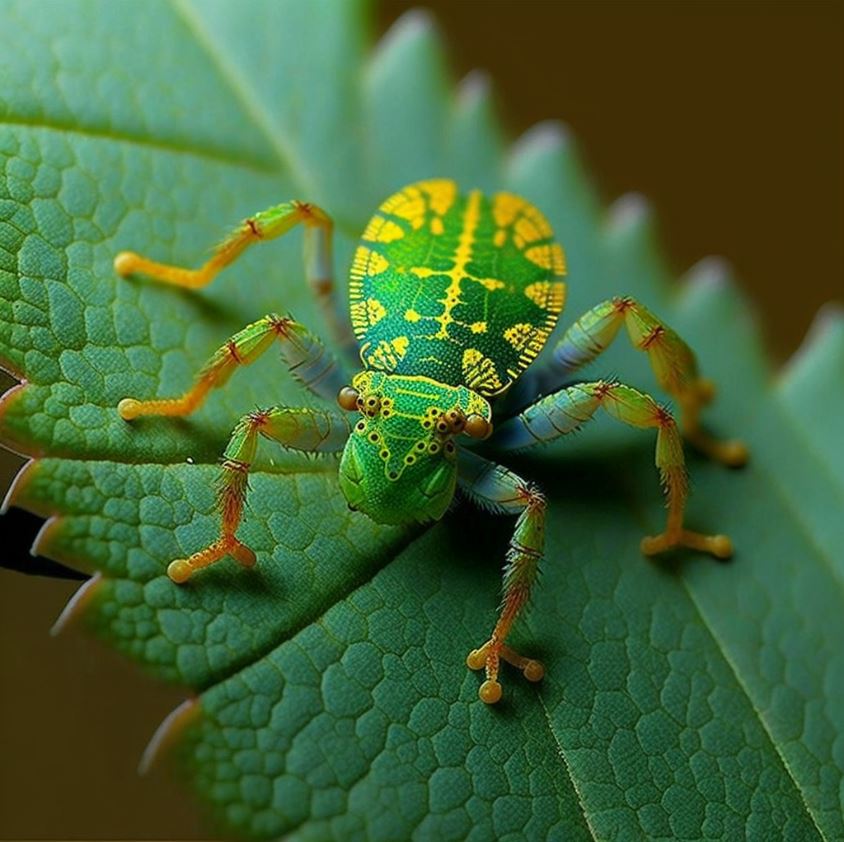LeafScamper
Basic Information
Anatomy
The leafscamper is a small arachnid-like creature with six legs, each ending in ball-like joints. It has a large, armored abdomen and lacks a thorax. It has two main eyes, as well as several smaller eyes that may be false. The leafscamper also has mandibles used to chew and break down organic matter, and an intricate design on its back.
Genetics and Reproduction
The leafscampers reproduce sexually, with males and females both contributing genetic material to create offspring. The female leafscampers lay eggs, which are fertilized by the males before being laid. The eggs hatch into small, immature leafscampers, which go through several stages of growth before reaching adulthood. The leafscampers have a short lifespan, typically only living for a few years. However, they reproduce quickly and have large litters, which helps to compensate for their short lifespan. The leafscampers have a diverse gene pool, which allows them to adapt to different environments and helps to ensure the survival of the species.
Growth Rate & Stages
Like many insects, the leafscamper goes through a process called metamorphosis, which consists of several stages of development. The first stage is the egg stage, in which the female leafscamper lays eggs in a suitable environment, such as decomposing organic matter. The eggs hatch into larvae, also known as nymphs, which are small and worm-like. The nymphs go through several molts, shedding their exoskeleton as they grow. As they mature, the nymphs develop into the adult form, which is characterized by its six legs and mandibles. The adult leafscamper is capable of reproducing and continues the cycle of metamorphosis.
Ecology and Habitats
The leafscamper can be found in a variety of environments, including forests, grasslands, and gardens. They thrive in areas with plenty of organic matter to decompose, and are often found near dead or dying plants. They are also attracted to areas with a high concentration of magic, as they are able to recycle magic from matter. Leafscampers are generally found in small groups, and their numbers tend to fluctuate depending on the availability of decomposable material. They are an important part of the ecosystem, as they help to recycle nutrients and magic back into the environment.
Dietary Needs and Habits
The leafscamper is a decomposer, so its diet consists primarily of dead plant and animal matter. It has mandibles that allow it to break down this matter and process it. In addition to decomposing organic material, the leafscamper is also able to recycle magic from the matter it consumes. It is able to detect the difference between living and dead matter or living and dead magic, and is able to consume both types of matter to recycle the magic within it.
Biological Cycle
The leafscamper is a decomposer that relies on dead organic matter for survival. In colder climates or during dry seasons, the availability of dead matter may be limited, which could negatively impact the leafscamper population. On the other hand, in warmer, wetter climates, there is likely to be a greater supply of dead matter, which would provide more opportunities for the leafscamper to thrive. Therefore, changes in climate, whether temporary or permanent, could have a significant impact on the leafscamper's ability to survive and reproduce.
Behaviour
The leafscamper exhibits some unique behaviors and psychological traits. They are not aggressive towards each other and tend to avoid conflicts. They are also known to be quite timid and will often try to flee when confronted by a potential threat. However, they are fiercely protective of their young and will defend them if necessary.
Additional Information
Perception and Sensory Capabilities
The leafscamper has six legs with ball-tipped joints that are sensitive to vibrations and other stimuli. It has two main eyes and several smaller, possibly false eyes that may be used to sense magic. These eyes may also be able to differentiate between living and dead matter, as well as living and dead magic.
Scientific Name
Arachnid
Lifespan
2-3 years
Average Height
2 inches
Average Weight
0.2 ounces
Average Length
4 inches
Geographic Distribution



Comments